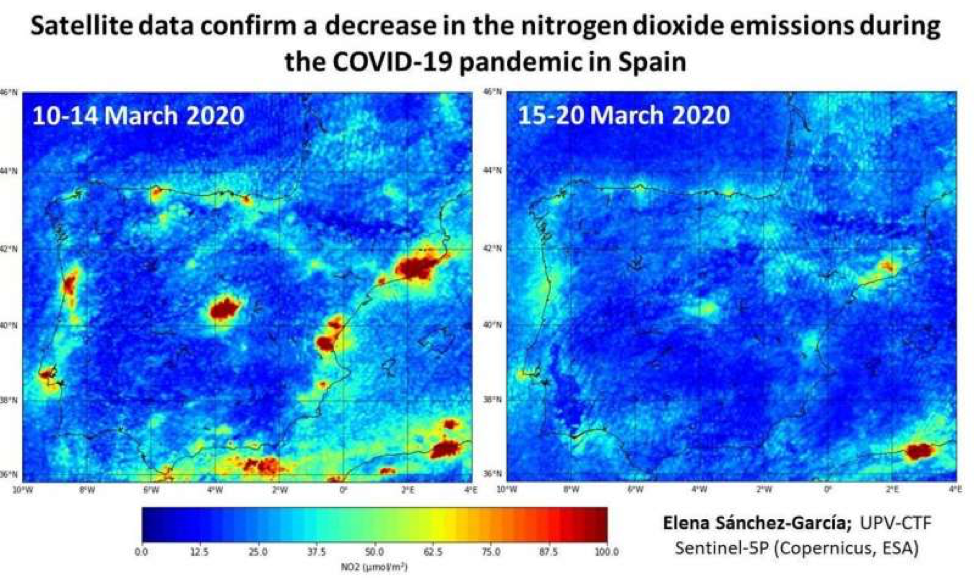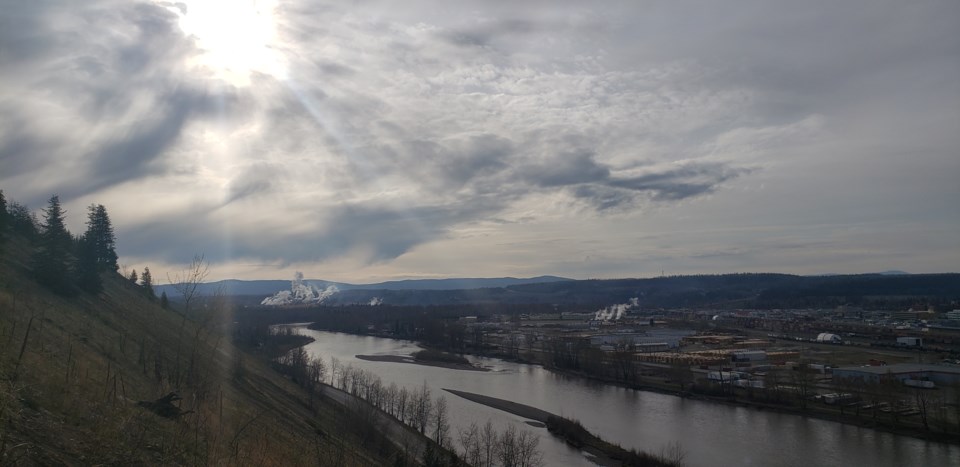This informational column was submitted to PrinceGeorgeMatters from Lindsay Sackett, Northern and Interior Region Program Coordinator for the Prince George Air Improvement Roundtable (PGAIR).
So far, 2020 has not been very kind: severe Australian bushfires, locust swarms in East Africa, earthquakes in Turkey, and now, the global COVID-19 virus pandemic.
As governments all over the world enact measures to slow the spread of the virus, one issue that actually seems to be improving everywhere, is air quality.
Around the world, people who can are working from home, students are not attending school, non-essential businesses are temporarily closed or curtailed, air travel is limited, events have been cancelled, and people are practicing physical distancing.
Most social exchanges are taking place virtually and the movement and transport of people has thus immensely decreased.
This decrease in activity seems to be the cause for a significant decrease in air pollution.
Areas showing the biggest improvements in air quality are major cities and metropolises.
New York, Los Angeles, London, Mumbai, Istanbul, and Wuhan are just a few. In each of these cities, the largest pollutant decrease seems to be in NO2, which is released into the atmosphere mainly by combustion engines, power plants, and other industrial processes.
With transportation limited and industry curtailed, it’s easy to understand why reduced levels of NO2 have coincided perfectly with the implementation of COVID-19 measures, especially in areas where these activities happen at such a high concentration.
In Spanish cities for example, (shown in the picture below) NO2 levels have declined 64 per cent after the implementation of efforts to flatten the curve.
This photo illustrates what satellites are currently observing all over the world.

Atmospheric concentrations of NO2 fluctuate quickly, and vary greatly over space and time. (For example, on weekdays vs on weekends).
They are also affected by weather conditions, such as wind, and on cloudy days satellite images don’t always display accurate levels, due to visual interference from the clouds.
Some researchers claim that media and satellite imagery assumptions of NO2 reduction may be flawed, and that such assumptions would require observations to be made over a much longer time period in order to be accurate.
However, similar observations continue to be made, and in a tellingly large number of places, all of which are participating in practices to help slow the spread of the novel coronavirus.
While COVID-19 is hitting the pause button on industry and travel, it leaves us wondering what air quality will look like when things resume.
Unfortunately, pollution levels are likely to head straight back up to where they were before the pandemic, perhaps even higher, as industry will be eager to make up for lost time, and people will be itching for some outdoor and social activity.
In the meantime, what could this mean for us here in Prince George?
With many residents and businesses participating in the same measures as cities around the globe, will we see an improvement in our local air quality?
In the spring, we usually see an increase in pollution likely due to road dust, but with fewer cars on the road, will we experience less of an increase this year?
As local industry begins to curtail, will we see a decrease in PM2.5 and NO2 concentrations, or will the industry decreases be made up by households releasing more wood smoke as they stay home?
During this time, it is also important to consider the health implications of living in a somewhat compromised airshed.
Will PG residents who contract COVID-19 experience more severe symptoms due to their higher exposure to air pollutants, relative to other small BC cities?
Recent studies by both Harvard University and the Italian Society of Environmental Medicine point to a connection between atmospheric particulate pollution and the rate and severity of COVID-19 spread.
“These types of findings are very alarming, and show the importance of air quality more than ever,” says Hossein Kazemian, PGAIR Director, at UNBC.
Whether or not we see any real impact on air quality here in Prince George, it is important that we learn from this unfortunate situation, and the impacts it is having on global air quality.
Maybe it will encourage more businesses and organizations to offer a work-from-home option, now that so many have the resources in place to make telecommuting work.
Maybe it will give people an opportunity to evaluate how often they drive unnecessarily, or revaluate their options for transportation.
Ideally, something will be taken away from this, what we learn can be applied, and air pollution sources can be targeted while also enjoying a strong economy.
More information is available on the PGAIR website.










